It’s almost difficult not to see the Yamaha tuning forks adorning the flanks of vehicles and products at any given motorsports event these days, but the Yamaha brand is so much bigger than the racing activities with which it is synonymous. This weekend at the LA Auto Show at the Los Angeles convention center, Yamaha is going all-out to provide attendees a glimpse of some of its alternative technologies.
It’s all part of Yamaha’s continuing plan to centralize its marketing message, “Two Yamaha’s, One Passion,” which presents more of a united front between Yamaha’s motor and music divisions, and the company has amassed a powerful display of its products in The Garage section at the LA Auto Show. The idea is to capitalize on the garage theme, according to Bob Starr, Corporate Communications Manager for YMUS.
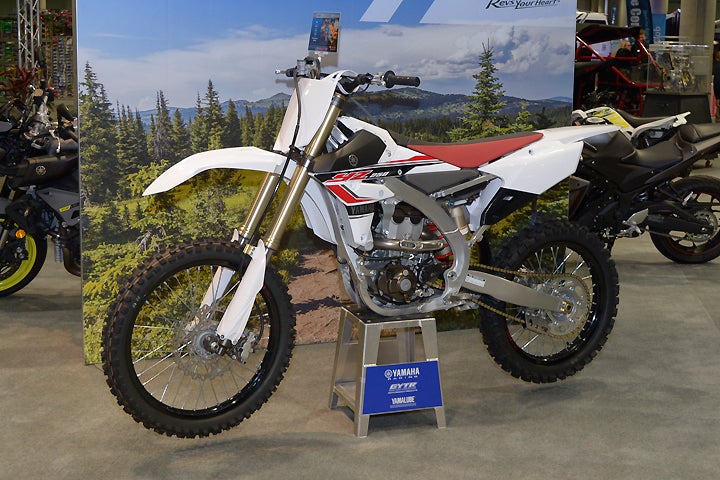
The Garage at the LA Auto Show. Yamaha capitalized on the theme by bringing key examples of just about every product the company makes. It even had a garage band play a few tunes for attendees—using all-Yamaha instruments and electronics, of course.
“It all really fits together,” Starr said. “Most of us have cars and trucks, but the products you see here are also things that might be found in the garage. It really all fits together. About a year ago we started a corporate initiative that we are calling ‘Two Yamahas, One Passion,” Starr said. “Yamaha music is a separate company in Japan. Also here, our corporate offices are about 10 miles apart, separate offices with separate presidents and separate staff. But the commonality is the tuning forks and the Yamaha name. A lot of the activities—playing music, riding a motorcycle, fishing, there is a similar passion among all of those that we do. That passion brings memories to each and every one of us.”
But Yamaha’s products extend beyond motorcycles, ATVs, snowmobiles, boats, personal watercraft, and power products such as generators and power washers, to items most fans of the brand might not be as familiar with, such as e-bicycles, e-assist wheelchairs and unmanned helicopters. At the LA Auto Show, Yamaha also displayed a concept dirt track racing car powered by an R1 motorcycle engine.
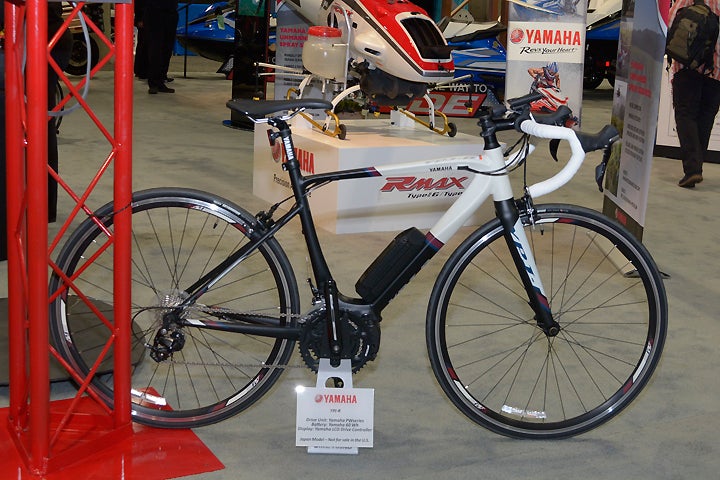
The alternative e-assist and power products were the ones that intrigued us, and we were able to take a closer look at them, such as the e-bicycle. Steve Markofski is one of Yamaha’s employees charged with new business development, and he is heavily involved in Yamaha’s e-bicycle products. Yamaha has been making pedal-assist e-bicycles since 1993.
“We’re a leader in the category,” Markofski said. “Since 1993 we have produced over three million drive units. We also have a line of bicycles that is in Japan only, but we are a supplier of e-bike drive systems for two companies in the U.S., Giant and iBike.
“The concept of it is that it uses PWseries drive system, but it also uses a very compact battery. Its output is under 1 amp-hour, or around 80 Watts, so it is not the type of battery that sustains long duration of e-assist, but that’s not what the bike was designed for. The bike is light—it weighs 33 lbs., and you treat it like a traditional bicycle. But when you need the e-assist, you can power it up. When you don’t need it, you just ride the bike like a normal bicycle.”
Markofski claims that products such as the e-bike are beneficial to the overall synergy of the company.
“We’ve recently shown two e-motorcycles in Japan, a road version and an off-road version, and this technology has also found its way into other products such as the wheelchair we have on display,” he said.
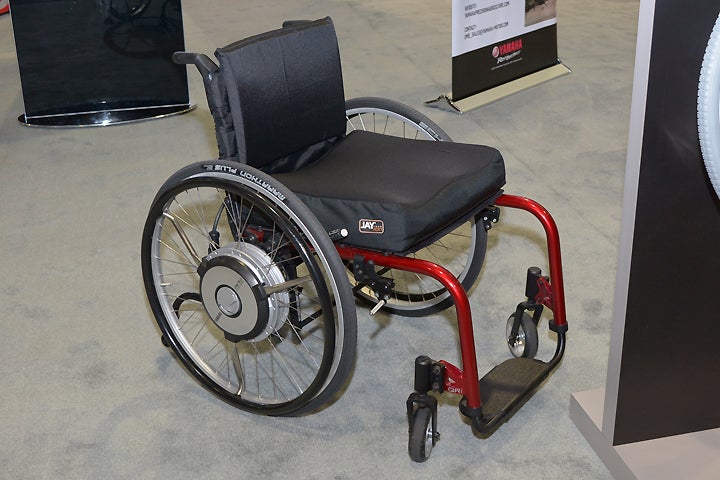
Joe Klickna, Yamaha’s JW Business Manager, was on hand to offer information about a Yamaha e-system we didn’t even know existed, the JWX2 Power Assist Wheelchair Kit. The JWX2 uses a Yamaha Power Assist System (PAS) to assist persons with limited mobility by giving them an electric-powered boost, which can help to reduce shoulder, arm and wrist injuries.
“It takes the user’s input and adds strength, control and efficiency to allow them to push themselves safely and efficiently,” Klickna said. “It allows them to go farther into the community, it preserves more independence, and it allows them to get more exercise compared to a sit-down, joystick-driven electric wheelchair.”
The JWX2 is designed to fit a variety of wheelchairs from other manufacturers. Yamaha adds the wheels and the control system to the chair manufacturer. Klickna said there are two battery types available with the system.
“The Nickel battery goes around 12.5 miles per charge, and the Lithium battery goes over 20 miles per charge, so it really gives riders the freedom to do what they want, how they want and when they want to do it throughout their day.”
As with most medical technology applications, the JWX2 is an expensive system, retailing for around $5000, but Klickna pointed out that it is a prescribed device that is only available through healthcare professionals.
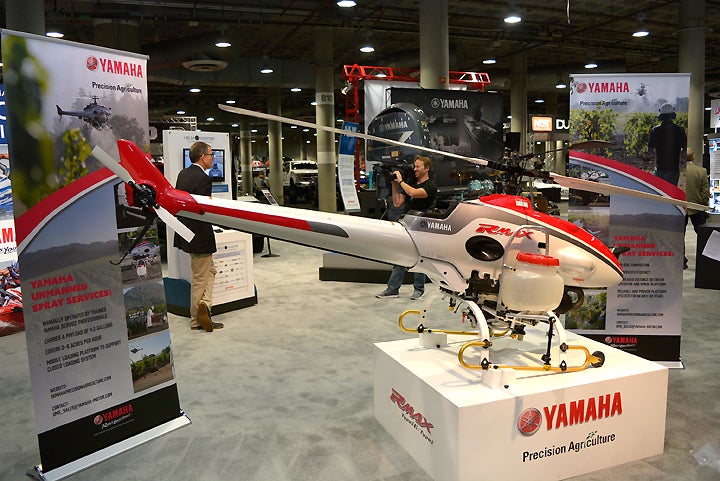
As cool as it looks, Yamaha’s RMAX helicopter is no toy. The RMAX has been a success in the unmanned industrial-use helicopter market for over 15 years, with over 2400 units used in Japan alone, for numerous tasks including planting, weed management, fertilizing and pest control.
With an overall fuselage length of 108.2 inches and a rotor diameter of 123.2 inches, the RMAX is powered by a 246cc, two-stroke, twin-cylinder engine that makes about 20.6 horsepower and can carry a 62-lb. load up to one quarter of a mile (visually). Yamaha has continued to advance the technology of the RMAX by using it as a development platform for autonomous flight using GPS technology, which can extend that range.
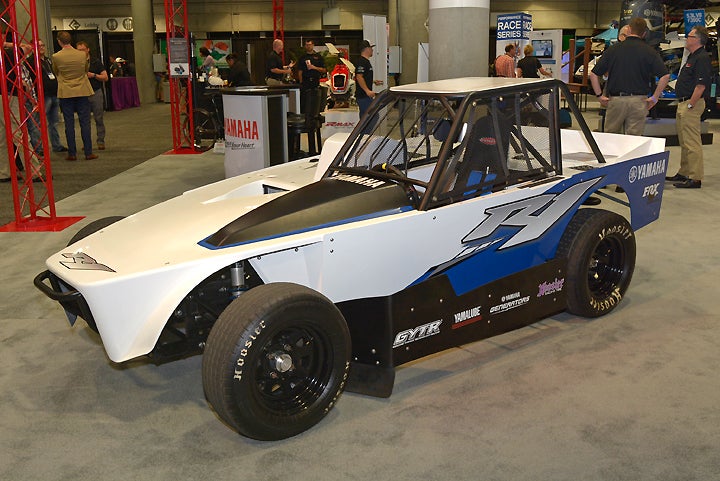
Since we’re four-wheeled fans, we were also stoked on the Yamaha dirt track concept car on display. Rob Trester, Yamaha Division Manager for New Business Development, offered the thought process behind its development.
“This really came out of an internal group within Yamaha,” Trester said. “A number of cross-company product planning groups got together, looking for some new business ideas and some new products that could be built. The idea was to kind of invigorate American dirt track racing by offering a completely turn-key car, something that you could buy through a Yamaha dealer and maybe be ready to race that weekend.”
Similar to its Yamaha’s YZ motocross and WR/FX off-road motorcycles, Yamaha’s goal would be to have select dealers sell the car—possibly even with Yamaha financing, stock the parts and provide technical support.
“There are some similarities to other spec classes out there that use motorcycle engines, but the team that built this car drove a lot of those other cars and tried to build something that is a little bigger and more comfortable. It’s also lighter than some of the other types of cars, so it handles differently. It’s just something new to build a potential spec class.”
Trester said that no target MSRP has been set for the car yet, although he said he hoped it would be under $30,000.
“We’re trying to do some research with various customer groups, and we haven’t completed our analysis of what final production costs would be, but we’re optimistic. This is the second version we have built, and we have been to two major events this year, the IMCA Supernationals in Boone, Iowa, and the World of Outlaws Duel in the Desert in Las Vegas. We are doing a lot of surveys, and we are getting a lot of positive feedback on the concept.”
The takeaway for us is that Yamaha is about a lot more than just creating competitive motorcycles and other leisure products. It continues to find ways to extend its technology into other markets beyond what you might find in your garage.
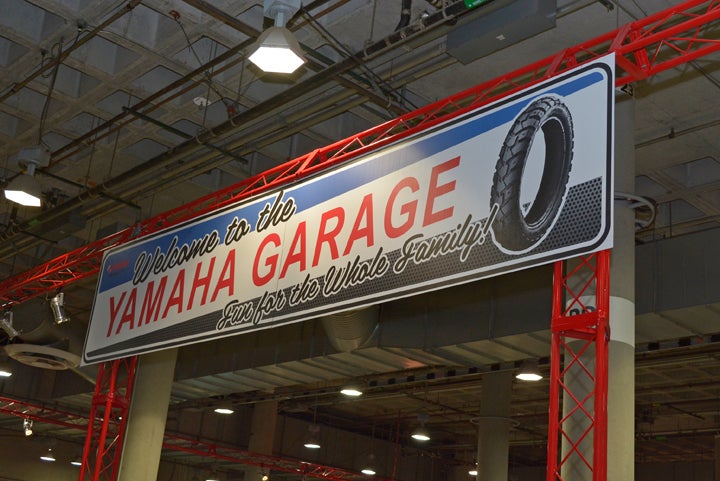
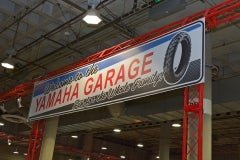
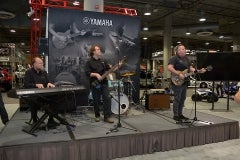
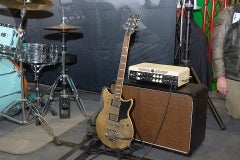
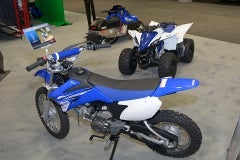
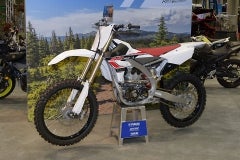
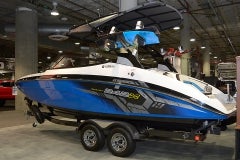
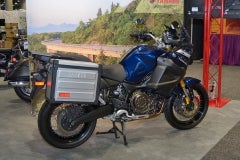
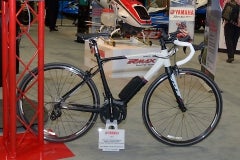
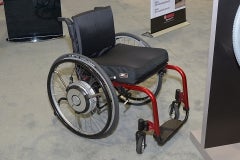
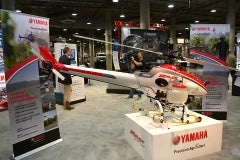
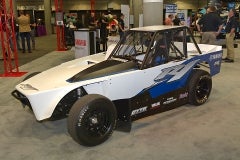
 Your Privacy Choices
Your Privacy Choices